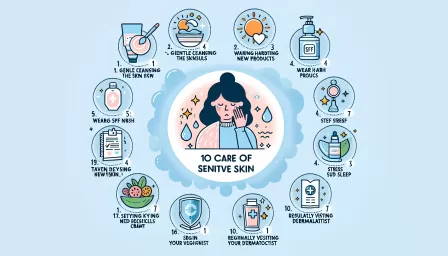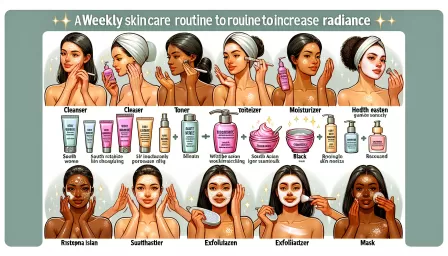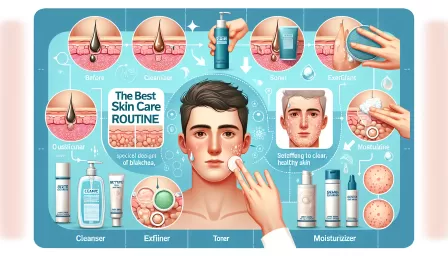Unlocking Relief: The Ultimate Guide to Perioral Dermatitis Supportive Therapy

Explore comprehensive strategies for managing perioral dermatitis with effective supportive therapy techniques, focusing on soothing symptoms and enhancing skin health.
Perioral dermatitis is a frustrating and often persistent inflammatory facial dermatitis, primarily affecting the skin around the mouth, nose, and sometimes the eyes. Characterized by red, bumpy, and sometimes scaly or itchy rash, managing perioral dermatitis requires a nuanced approach. This ultimate guide delves into perioral dermatitis supportive therapy, offering insights and practical advice for those seeking relief from this challenging condition.
Understanding Perioral Dermatitis
Before delving into supportive therapy options, it's crucial to understand perioral dermatitis. This condition differs from other dermatological issues due to its unique triggers, including topical steroid creams, harsh skincare ingredients, or environmental factors. Recognizing the symptoms and triggers is the first step in managing perioral dermatitis effectively.
Identifying Triggers
Key to managing perioral dermatitis is identifying and avoiding known triggers. Common culprits include:
- Topical steroids: Prolonged use can exacerbate or trigger outbreaks.
- Harsh skincare products: Ingredients like sodium lauryl sulfate or certain oils can irritate the skin.
- Environmental factors: Extremes of weather, pollutants, or even stress can trigger flare-ups.
Supportive Therapy Strategies for Perioral Dermatitis
Supportive therapy for perioral dermatitis focuses on symptom relief and prevention of flare-ups. It encompasses a holistic approach, addressing skincare routines, lifestyle modifications, and sometimes dietary changes.
Gentle Skincare
A cornerstone of perioral dermatitis supportive therapy is adopting a gentle skincare routine. Key recommendations include:
- Using non-comedogenic moisturizers to maintain skin hydration without clogging pores.
- Avoiding irritants: Including fragrances, alcohol, and harsh exfoliants in skincare products.
- Minimalist approach: Limiting the number of products used to avoid overwhelming the skin.
Medications and Topical Treatments
While supportive therapy focuses on non-medical interventions, certain medications and topical treatments can offer relief. Antibiotics, either topical or oral, are sometimes prescribed to reduce inflammation and bacterial overgrowth. Additionally, topical immunomodulators, like pimecrolimus cream or tacrolimus ointment, may be recommended for their anti-inflammatory properties without the adverse effects associated with steroids.
Lifestyle and Dietary Adjustments
Lifestyle factors play a crucial role in managing perioral dermatitis. Stress reduction techniques, such as yoga, meditation, or regular exercise, can mitigate flare-ups. Similarly, dietary changes, including reducing intake of refined sugars, dairy, and processed foods, may improve symptoms for some individuals.
Long-term Management and Prevention
The journey to managing perioral dermatitis is often long-term, with a focus on prevention and maintenance. Regular assessment of skincare and lifestyle choices, along with careful avoidance of known triggers, can prevent future flare-ups. Regular follow-ups with a dermatologist are crucial to adapting your treatment plan as needed.
Natural Remedies and Supplements
In addition to medical and lifestyle interventions, certain natural remedies and supplements may support skin health. Omega-3 fatty acids, found in fish oil supplements, have anti-inflammatory properties that can benefit skin health. Similarly, topical applications of aloe vera or honey have been reported to soothe irritated skin, though their efficacy varies individually.
Conclusion
Managing perioral dermatitis requires a multifaceted approach. Supportive therapy plays a vital role in alleviating symptoms, preventing flare-ups, and enhancing overall skin health. By understanding the condition, identifying personal triggers, and applying gentle skincare practices, those affected by perioral dermatitis can achieve significant relief. Remember, each individual's journey is unique, and what works for one person may not work for another. Therefore, consultation with a healthcare professional is essential to tailor a treatment plan that best suits your needs.
Perioral dermatitis can be a challenging condition to live with, but with the right supportive therapy strategies, it is possible to manage symptoms and reclaim your skin health. Embrace a holistic approach, consisting of gentle skincare, mindful lifestyle changes, and possibly medical interventions, for the best chance at long-term management and relief.



























